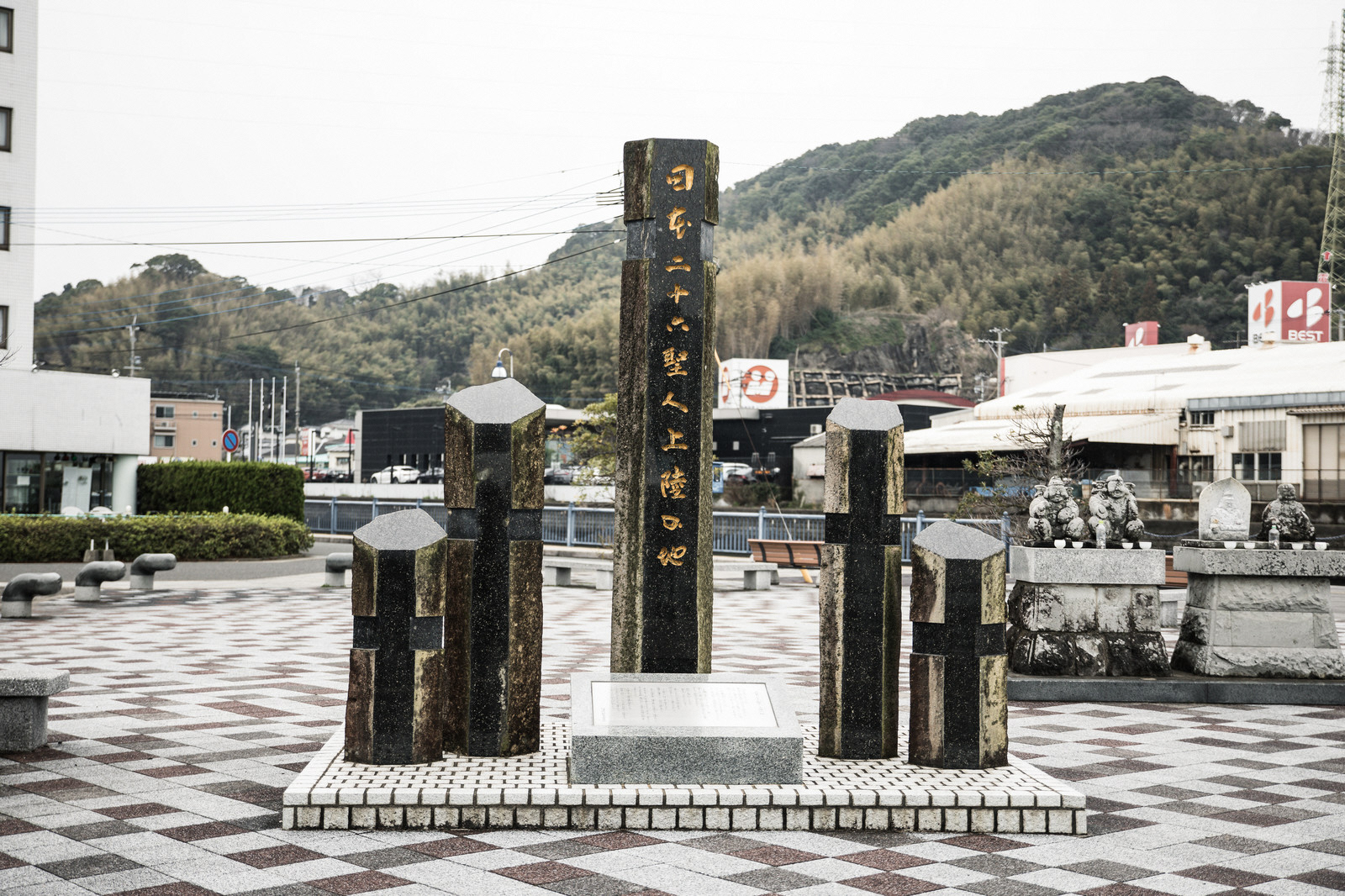26 Christian Martyrs Landing Site(「日本26聖人上陸記念碑《浦郷》」翻訳)

26 Christian Martyrs Landing Site
In 1587 (Tenshō 15), after conquering Kyushu, Hideyoshi Toyotomi decided on the jurisdiction of each feudal lord in Kyushu at Hakozaki in Chikuzen. At that time, he noticed that the municipal lands of Nagasaki had been donated to the Society of Jesus. Enraged by this, Hideyoshi issued the “Bateren Expulsion Order” which prohibited the propagation of Christianity.
In October 1596 (Keichō 1), the Spanish ship, San Felipe, encountered a typhoon during her sea voyage and drifted to Tosa. Upon receiving a report about the ship from the lord of Tosa, Motochika Chosokabe, Hideyoshi dispatched Nagamori Mashita, one of his Five Commissioners or “Gobugyo”, to confiscate the huge cargo of the San Felipe. This was standard procedure, under applicable Japanese maritime law, which decreed that any vessel stranded or wrecked in Japan belonged, along with its cargo, to the local authorities.
During the confiscation procedures, the crew insinuated that Spain had gained its empire by first conducting missionary work and then sending in conquistadors (Spanish explorers) to colonise the area.
Hideyoshi Toyotomi was enraged and issued an order to immediately enforce the Bateren Expulsion Order and expel the involved missionaries. As a result, a total of 24 people (6 Franciscan priests and monks, 14 churchgoers, and 3 Jesuits, including Paul Miki) who were conducting missionary work in Kyoto, were captured.
On January 3rd, 1597 (Keichō 2), the captured 24 people had their left earlobes cut off and were pilloried and dragged through Kyoto, Osaka, and Sakai for public shaming. Afterwards, it was decided that their execution would be held as a deterrent in Nagasaki, where many Christians lived. On January 9th, the group departed from Sakai and headed towards Nagasaki on foot. A guard was assigned to the group to make sure that no one died of disease or injury. Partway through their travel, two more believers voluntarily joined the group, bringing the total to 26.
On February 4th, the group arrived at Sonogi, where nooses were placed around their necks and, with the same rope, their hands were tied behind their backs. The 26 individuals boarded three boats and crossed Omura Bay, arriving at Togitsu around 11 o'clock at night, where they endured the cold of the snowy night, hunger, and exhaustion as they spent the night on the boat.
In the early morning of the next day, February 5th, they landed at the wharf in Togitsu*. Then, headed for Nagasaki and arrived at Nishizaka, their place of execution. At the execution site, one by one they were hung on the cross and speared to death.
The martyrdom of the 26 was witnessed by Jesuit missionary Luis Frois, who was staying in Nagasaki. His report caused a great sensation in Europe. Later, in 1862 (Bunkyū 1), the 26 were canonised as ‘Saints’ by the Pope, Pius IX.
* The exact location of where the 26 martyrs landed is not precisely known, the docks of Togitsu, Hamada, or Kitadomari are seen as most likely places.
We would like to thank Nagasaki University of Foreign Studies' "Gaidai Project" team for their assistance with translation and proofreading as part of their "Regional Multilingualization Project".
- この記事に関するお問い合わせ先
-
社会教育課 社会教育係
〒851-2198
長崎県西彼杵郡時津町浦郷274-1
電話番号:095-882-3978(直通)
ファックス番号:095-881-2725



更新日:2025年03月10日